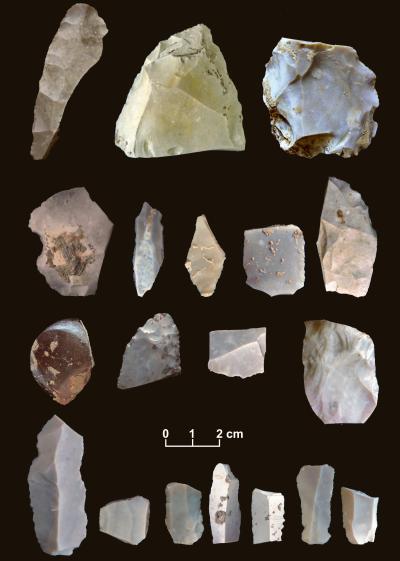Science News
First Americans’ Early Arrival
March 24, 2011
by Anne Holden

During the last century, the story about the peopling of the Americas seemed relatively straightforward. But over the past few decades, new evidence has challenged all we thought we knew about the route, timing, and origins of these first Americans. Now an archaeological discovery in central Texas has turned everything on its head once again.
Nearly 80 years ago, North American archaeologists identified what they believed to be the earliest stone tools in the New World. Characteristic of the Clovis culture, stone tools with “fluted” spear points first appeared about 13,000 years ago and were found throughout North America. However, early versions of these stone tools have never been found outside North America, in places like northeast Asia or Alaska, where the first Americans started their journey into the New World. This lack of continuity of Clovis culture tools outside North America has led some to question whether this culture really did accompany the First Americans.
In this week’s issue of Science, a team of North American archaeologists report the first concrete evidence debunking the so-called “Clovis First” archaeological model of the peopling of the Americas.
The team of archaeologists, led by Michael Waters of Texas A&M University’s Center for the Study of the First Americans, has been excavating at the Debra L. Friedkin archaeological site northwest of Austin for five years. This site contains stone tools and other artifacts that span American prehistory, including thousands of Clovis points.
But whereas the appearance of Clovis points in most archeological dig sites marks the earliest evidence of human occupation, artifacts discovered at this site predated the Clovis points.
As Waters recalls, “The kicker was the discovery of nearly 16,000 artifacts below the Clovis horizon that dated to 15,500 years ago.” That’s 2,500 years older than any Clovis points unearthed in the Americas.
Among the 16,000 artifacts excavated are various types of small blades, choppers, and scrapers made of chert. Their small size has led some to theorize that these tools represent a ‘mobile toolkit’ that could easily be packed up and moved. Now identified as the Buttermilk Creek Complex, this assemblage represents the oldest archaeological site in North America.
The early age of this site coincides with recent genetic and paleoenvironmental evidence that people first crossed into the Americas much earlier, perhaps as early as 30,000 years ago, and spread into North America by about 17,000 years ago. But the archaeological record in support of an early arrival has, until now, been limited.
Many experts believed more archaeological evidence was needed to support the model of an early arrival. The Buttermilk Creek Complex provides that evidence. The discovery of a huge assemblage of stone tools that predate Clovis culture also puts to rest the conventional wisdom that the first Americans brought the Clovis culture with them from Asia.
As Waters explains, “It is now time to abandon once and for all the ‘Clovis First’ model and develop a new model for the peopling of the Americas.”
Anne Holden, a docent at the California Academy of Sciences, is a PhD trained genetic anthropologist and science writer living in San Francisco.
Image courtesy of Michael R. Waters